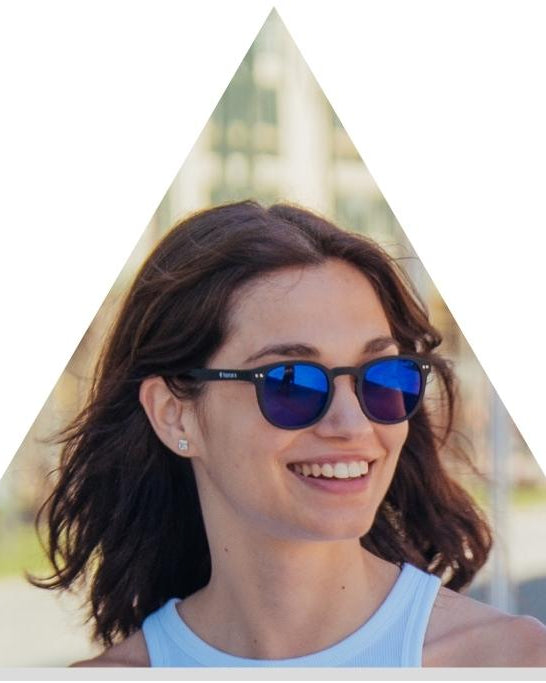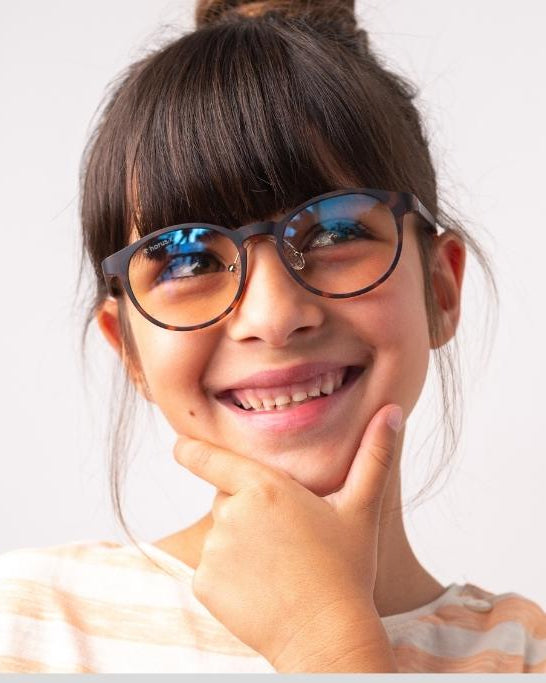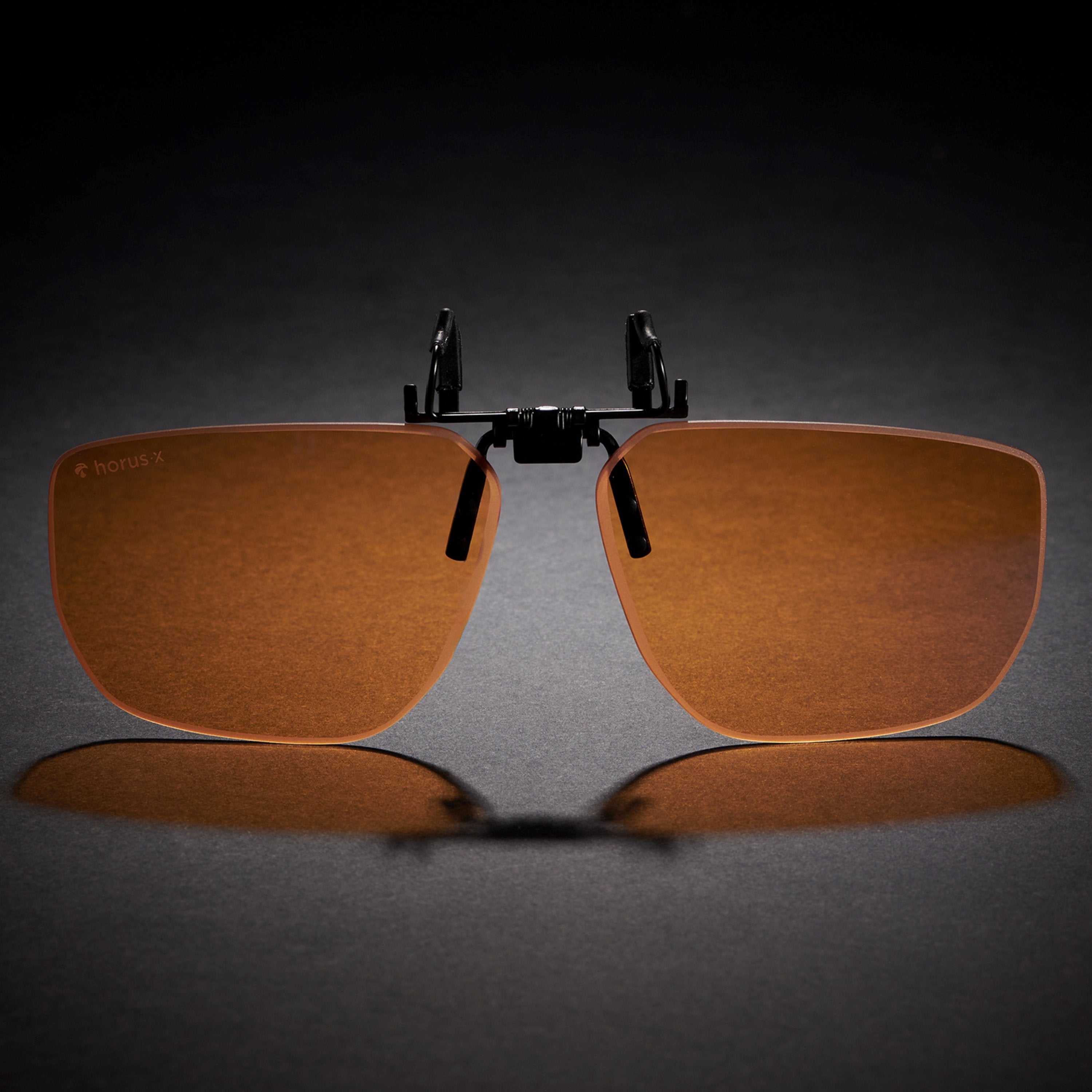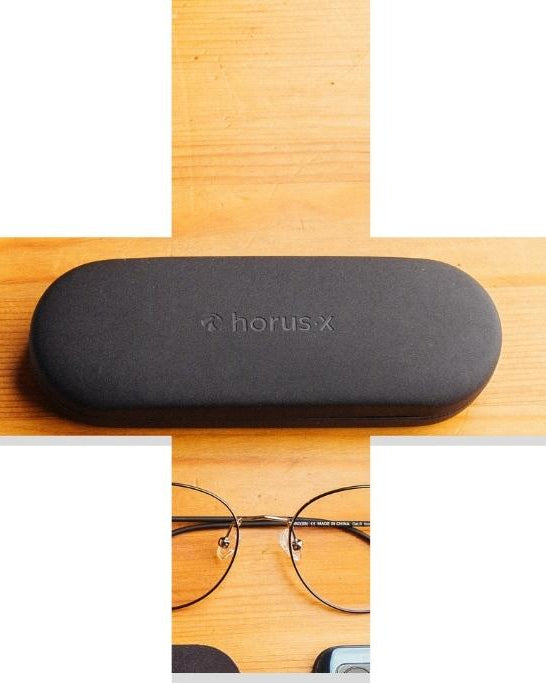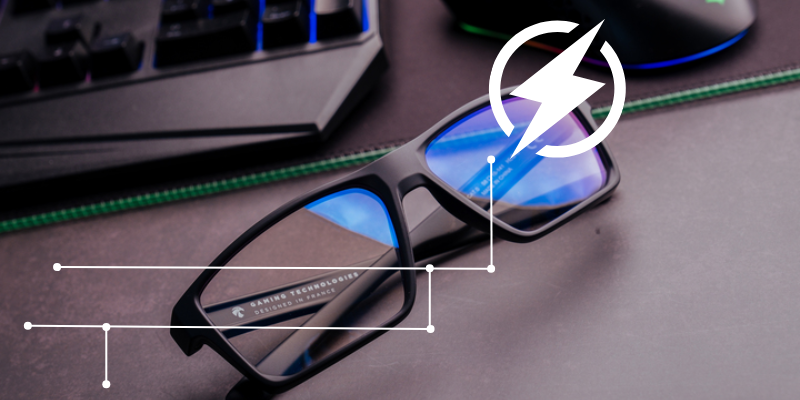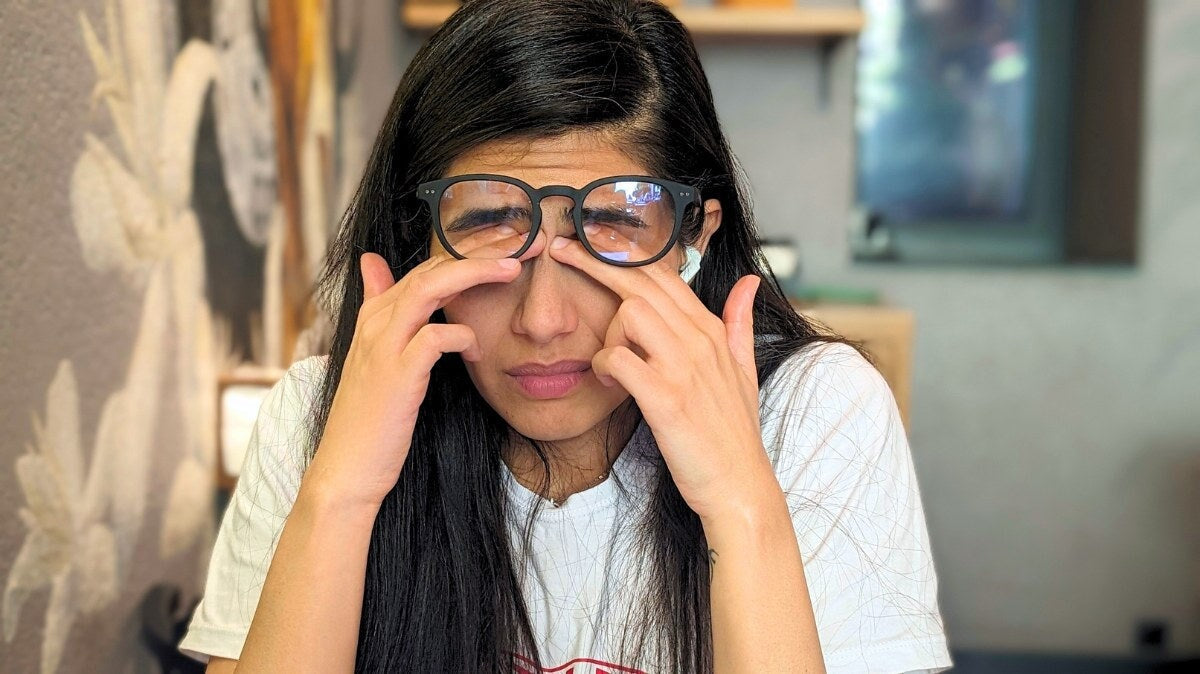Light sensitivity (also known as photophobia) is like a boss hitting you with a sneaky debuff. Every time light strikes, your visual comfort HP plummets, your field of vision gets blurry, and you get hit with a nasty migraine + eye strain combo.
So, how do you prevent and counter the photophobia effect? With the right gear, of course — the right pair of glasses! But be careful: there are several options out there, from polarized sunglasses and tinted lenses to blue light blocking glasses… not always easy to know which to pick.
In this article, we break down how photosensitive glasses work and share our top 5 picks to finally KO light sensitivity.
Our Top 5 Photosensitive Glasses at a Glance
Before we dive in, here’s a quick look at our selection of photosensitive glasses to help you fight photophobia.
Want to learn more about each model? Scroll to the end of the article for all the details!
| Model | Photo | Best Use | Price |
 |
Outdoor | €54 | |
|
Horus X |
 |
Outdoor | €79.90 |
|
Horus X |
 |
Outdoor | €59.90 |
|
Gunnar Intercept |
 |
Indoor | €69.90 |
|
Horus X |
 |
Indoor | €79.90 |
|
Horus X |
 |
Indoor | €59.90 |
|
Horus X |
 |
Indoor | €69.90 |
Reminder: The Symptoms of Photophobia (Light Sensitivity)

Contrary to what you might think, photophobia isn’t a fear of light or street lamps — it’s actually a sensitivity reaction to light, even when it’s not very bright.
In short, people who suffer from photophobia experience discomfort or even intolerance to light, whether it’s natural or artificial.
The symptoms vary from person to person, but the most common include:
- 🔦 Glare or light sensitivity
- 😶🌫️ Blurry vision
- 😵💫 Eye strain
- 😭 Excessive tearing
- 🤕 Migraines and headaches
- 😵 Eye and neck pain
- 🔴 Eye inflammation
- 👁️ Frequent blinking
But that’s not all! Light sensitivity can also be a symptom of another condition. People with photophobia may also experience eye irritation (conjunctivitis, keratitis, dry eyes to name a few), neurological disorders such as meningitis, or even glaucoma. Finally, if you wear contact lenses, your sensitivity to light might be linked to that too — another good reason to see a specialist if you’re unsure!
💡 Want to dig deeper? Check out our complete guide here: Photophobia: Symptoms and Treatment.
Photosensitive Glasses: What Are They?

The term “photosensitive glasses” refers to glasses specifically designed to reduce visual discomfort in people who are sensitive to light. Unlike regular glasses, they feature lenses that filter or adjust certain specific wavelengths of light to improve tolerance.
In practical terms, that means they can:
- 🌈 Reduce light intensity with tinted lenses in specific shades (such as pink, yellow, or amber).
- 🪞 Protect against glare by filtering out the wavelengths responsible for it (around 484 nm in the light spectrum).
- 🔵 Block part of the blue light emitted by screens — especially in the blue-green wavelength range, to which people with photophobia are particularly sensitive.
If you want to dig into the science, check out this study, which highlights the effects of tinted and photosensitive lenses on migraines in people with photophobia.
Tinted Sunglasses, Polarized Lenses, Blue Light Filters: Which Protection Should You Choose for Light Sensitivity?
When you suffer from photophobia, a pair of photosensitive glasses can really help relieve your symptoms. While you wait for a diagnosis and treatment of the underlying cause of your light sensitivity — and even afterward — your doctor may recommend wearing protective eyewear.
But not all lenses are created equal, and it’s easy to feel lost faced with all the options out there.
Tinted Sunglasses

Tinted sunglasses may seem like a good idea if you’re sensitive to bright light. However, while they reduce light intensity, they don’t necessarily filter out the wavelengths that trigger photophobia or glare.
So make sure to check the lens category (go for at least category 3 sunglasses), the lens color, compliance with standards (CE certification and ideally UV400), and whether or not they feature polarization, anti-reflective, or photochromic coating.
But be careful! Wearing sunglasses indoors can cause chronic light adaptation and actually lower your light tolerance even more. Instead, go for high-quality sunglasses that reduce glare outdoors, and pair them with blue light blocking glasses with pink or amber lenses for visual comfort indoors.
Polarized Sunglasses

To cut down on glare while protecting your sensitive eyes from bright light and UV rays, polarized sunglasses are a great option.
Just like tinted sunglasses, the rule of thumb is to wear them outdoors and put them away when inside, where tinted screen glasses will be more effective.
Photochromic Glasses
Photochromic lenses, which adapt to brightness levels, have the advantage of automatically transitioning from light to dark. However, they may be less effective indoors or slow to react depending on the light conditions. They also don’t necessarily block specific wavelengths like blue light.
So, not all photosensitive glasses are photochromic, and photochromic lenses have their pros and cons. It’s up to you to decide which glasses suit your needs best!
Blue Light Blocking Glasses
As mentioned earlier, lenses that effectively filter blue light (especially wavelengths between 480 and 520 nanometers — in the green to blue light range) can also help relieve photophobia indoors. They also serve as a shield against eye strain from screens!
Opt for tinted lenses whenever possible to maximize comfort if you’re sensitive to light. And don’t forget to pair them with good sunglasses whenever you head outside your cave.
Top 5 Best Glasses for Light Sensitivity Protection
Now that you know everything about photosensitive glasses and how they work, we’ve put together a hand-picked selection to protect your eyes in every situation.
Polarized Sunglasses: Sunski Shoreline (around €54)

To prevent eye strain and glare outdoors, we recommend good sunglasses that effectively block UV rays and reduce brightness. The Sunski Shoreline, with their timeless look and amber polarized UV400 lenses, are an excellent and affordable choice.
Polarized Sunglasses: Horus X ProXima Performance (€79.90)
This one’s top of the line when it comes to protection: Ultra® category 3 polarized lenses with anti-reflective, anti-fog, anti-UV, hydrophobic, and oleophobic coatings. Add to that an ultra-light wraparound frame (only 23 g!) and you’ve got the perfect ally for all your adventures, light sensitivity or not.
Polarized Sunglasses: Horus X One Sun (€59.90)
It wasn’t easy to pick just one model from our Horus X polarized sunglasses (we love them all, of course — they’re ours!). We recommend the One Sun, with its aerodynamic, wraparound frame and our XPLORER™ polarized lenses (100% UV protection and anti-glare) for maximum comfort outdoors.
Amber Blue Light Blocking Glasses: Gunnar Intercept (€69.90)

For indoor comfort, as we mentioned earlier, if you suffer from light sensitivity, amber blue light blocking glasses are your best bet. Among the models we recommend are the Gunnar Intercept glasses (with Amber or Amber Max lenses), which do the job perfectly.
Light Amber Blue Light Glasses: Horus X Esport ProXima (€79.90)

If you’re looking for light amber lenses without compromising on protection, paired with a frame designed for comfort, check out our Esport ProXima. Initially designed for esports, these glasses offer cutting-edge technology (ULTRA ESPORT™: anti-UV, 100% of blue light from 380 to 400 nm and 77% from 380 to 450 nm, anti-reflective) with a slightly lighter tint for ultra-accurate color rendering.
Amber Blue Light Blocking Glasses: Horus X One (€59.90)
This one was another tough call (check out all our blue light blocking glasses to find your favorite), but we stuck with one of our best sellers: the Horus X One Gaming!
With its wraparound design, aerodynamic frame, and PLASMA® amber lenses, it’s perfect for relieving eye strain and effectively filtering out blue light from screens — and all that at a super affordable price.
Amber Blue Light Blocking Glasses: Horus X One Revolution (€69.90)
Slightly less wraparound than its big sister, the One Gaming, but still highly effective, the One Revolution has your back with its PLASMA® amber lenses and a design made for optimal comfort. Like all our amber-tinted glasses, it offers 100% UV protection and blocks 100% of blue light from 380 to 400 nm and 86% from 380 to 450 nm, with an anti-reflective coating and a lifetime warranty. You’re welcome 😉.
Final Word: Photosensitive Glasses for Next-Level Eye Protection
Let’s sum it up: good photosensitive glasses for light sensitivity should protect against glare, reduce brightness, and effectively filter blue-green wavelengths (480–520 nm) without compromising on quality. And for that, there are really just two must-haves: a good pair of sunglasses for outdoors and a good pair of tinted glasses for indoors — ideally with anti-reflective and blue light filtering coatings. That’s your winning combo.
And if you still haven’t found your holy grail after all these expert tips, take our quick quiz to find out which pair of glasses is made for you. We promise — you’ll find your perfect match!



